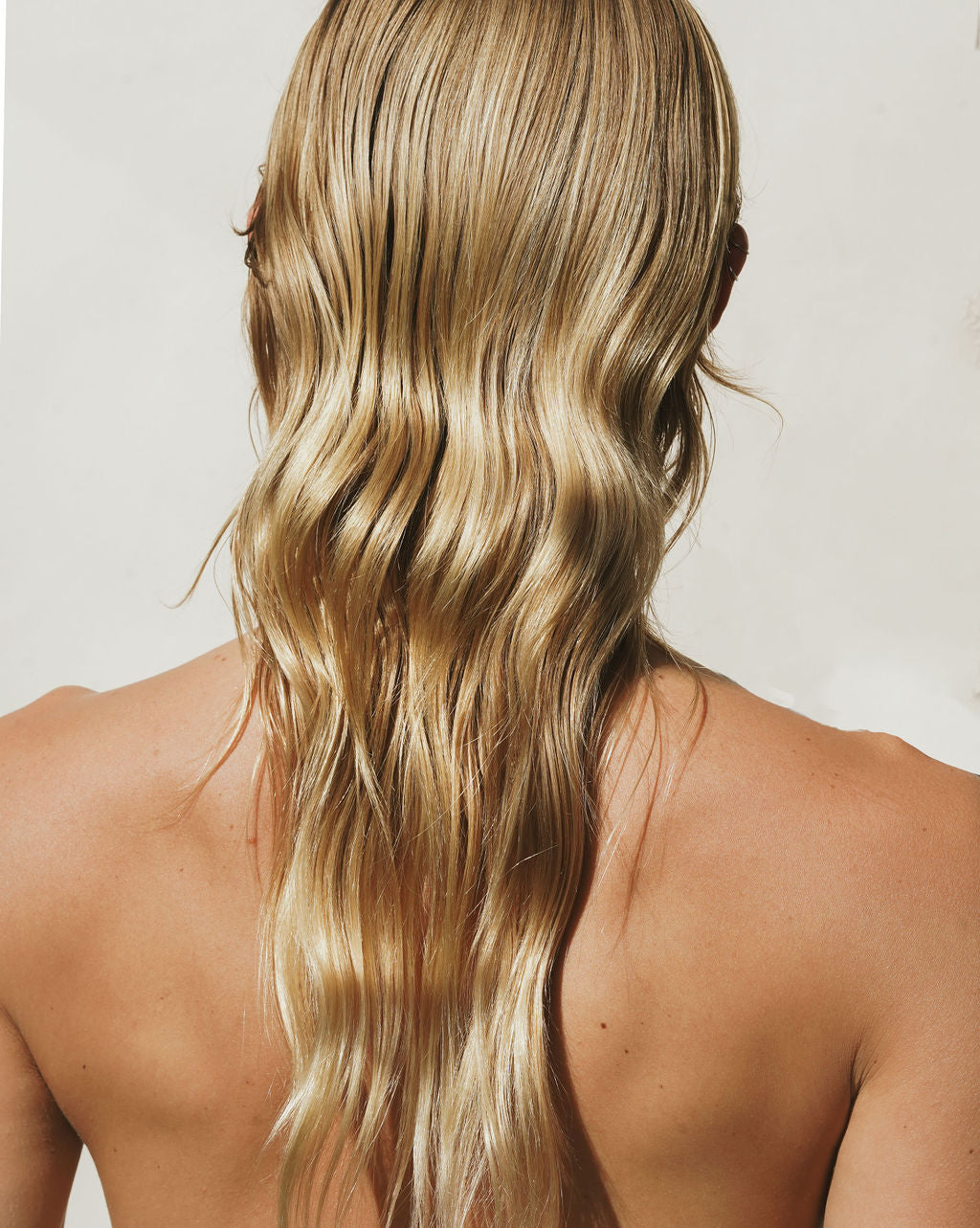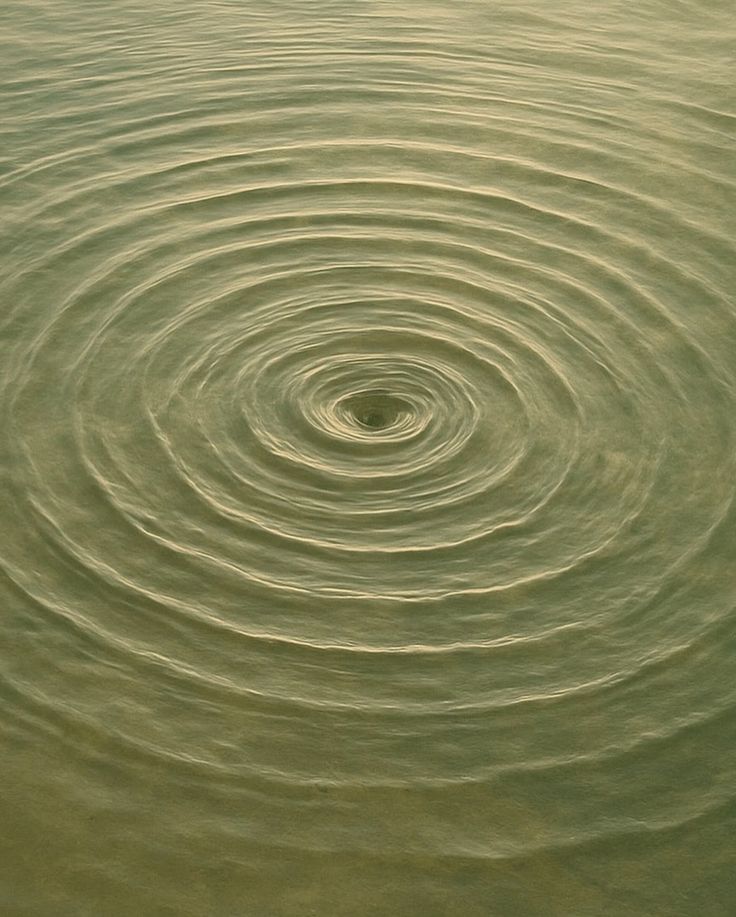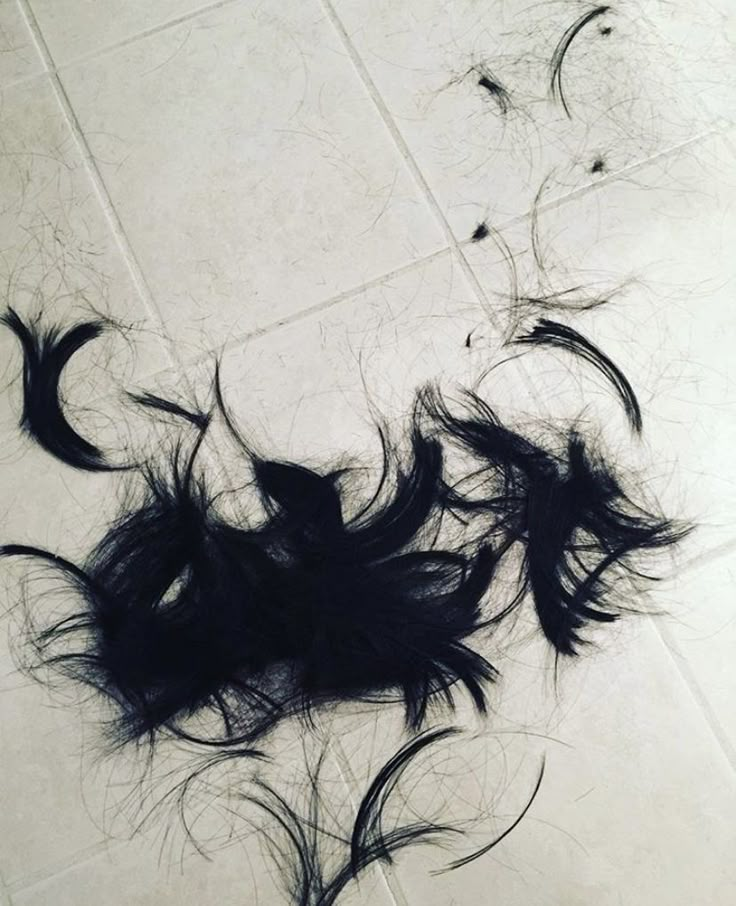Here’s the thing about getting that healthy natural gloss in your hair. Hydration and moisture are actually different terms, and while they’re related, they’re not interchangeable. Just like with your skincare routine, it’s important to know the difference between hair hydration and moisture! Otherwise, your dry, brittle, and frizzy hair problems might continue even if you’ve been diligently dressing your hair with all the best oils.
It all starts with your hair structure and the three layers in every strand:
The cuticle is a protective outer layer of your hair, made up of dead cells that smooth out like scales to guard the innermost layers of the hair fiber.
The middle cortex is the thickest layer of the hair shaft, made up of long, thin cells that surround the medulla. This more substantial layer is what gives your hair its strength, color, and texture.
This is the innermost part of your hair: a thin tunnel at the center. Think of it like the straw-like hole in the center of a bucatini noodle!
So what’s the difference between hydration and moisture for your hair? Let’s break it down easy!
Hydration vs. Moisture
Think of hydration like a tall drink of water for your hair. If your hair is hydrated, that means the inner two layers of your hair (the tunnel-like medulla and the petal-like cortex) have absorbed enough water to prevent your hair from being parched and porous.
Having water in your hair is only half the battle. Now that you’ve hydrated the innermost layers of your hair, you need to make sure that water doesn’t evaporate out. That’s where moisturizers come in. Just like your daily moisturizer or nighttime cream, oils seal in moisture to the cuticle layer. Thanks to their fatty acids, oils help replace lipids in the hair to protect it from daily wear and tear.
So to recap, hydration = water, while moisture = oils. When your hair is dry, brittle, and riddled with split ends, it’s not necessarily because your hair hasn’t been properly conditioned—it could be that there wasn’t enough water in the strand in the first place, or vice versa.
Which one is best for your hair?
Long story short: your hair needs both. Every strand of hair is made up of 25% water. So for the healthiest hair, you need quite a bit of water to get in there, and then you also need to make sure your hair is moisturized so it doesn’t evaporate out.
Your hair will also tell you what it needs. Strands that are dehydrated tend to be more porous, because they have the room to take on water. A good way to test if your hair is dehydrated is to take a strand and drop it into a glass of water. Dehydrated hair will sink as it takes on all that new water, while lower porosity hair will stay afloat.
Your needs will also vary based on hair type. Typically, straighter hair will need less water, while curly hair will need more.
How to hydrate your hair
If your hair is feeling dessert dry or prone to breakage, you’ll want a two-pronged approach to make sure it gets—and keeps—enough water. Here’s a checklist for covering your hair hydration and moisturization needs!
Hydration:
Every cell in your body needs water. But when you’re dehydrated (like 75% of us are), this water is likely being diverted to your internal organs first for more urgent functions versus to the shaft of your hair. Be sure to stay hydrated with lots of water and try an electrolyte to maintain a balance of water in your cells if you sweat a lot, exercise hard, travel frequently, or are feeling particularly parched.
Don’t make your emotional support water bottle do all the work. Look to crisp, hydrating whole foods like watermelon, cucumbers, strawberries, zucchini, celery, mushrooms, spinach, cauliflowers, and bell peppers to stay watered and get your micronutrient needs met at the same time.
Just like in your skincare products, there are certain ingredients that act as humectants (like hyaluronic acid) to draw water into your skin, the same thing goes for your hair. Hair humectants like manuka honey, glycerin and aloe vera are highly beneficial for drawing water into the hair to keep it quenched.
HOW TO MOISTURIZE YOU HAIR:
If you’ve noticed dry hair, you might be tempted to give it a good soak in the bath or shower. But the harsh detergents in many shampoos can strip away the protective natural oils in your scalp and hair, actually causing your hair to leak liquid as a result. Always use gentle products in your hair routine to avoid upsetting your pH balance.
If you’re a skincare junkie, you probably know that emollients and occlusives are what help seal in the moisture in your skin. Same thing for your hair! Emollient ingredients can influence how your hair cells function, while occlusive ingredients sit on top as an added barrier. Many moisturizing ingredients are both. Look for a hair mask or conditioner with cold-pressed and nutrient rich ingredients like olive oil, jojoba, argan oil, marula, sweet almond, or shea butter.
Pre-shampoo oil treatments, often referred to as pre-poo treatments, play a significant role in maintaining the moisture and health of hair. Here are some key points about their importance:
Moisture Retention:
These treatments help in retaining moisture in the hair. Oils form a protective layer around the hair shaft, reducing the amount of water absorbed during the washing process. This is particularly beneficial for curly or coily hair types which are more prone to dryness.
Reduced Hygral Fatigue:
Hair swells and contracts when it absorbs and then loses water, which can lead to damage over time. Pre-shampoo oil treatments minimize this swelling, reducing what's known as hygral fatigue.
Detangling and Manageability:
Applying oil before shampooing can also make detangling easier, reducing breakage and hair loss. This is especially useful for those with long or textured hair.
Nutrient Supply:
Many oils used in these treatments are rich in essential nutrients like vitamins, minerals, and fatty acids. These nutrients can strengthen the hair and improve its overall health.
Protection from Harsh Shampoos:
Pre-poo treatments can also protect hair from harsh detergents in shampoos that strip natural oils, leaving hair dry and brittle.
Improved Hair Texture and Shine:
Regular use of pre-shampoo oil treatments can improve the texture and appearance of hair, making it shinier and smoother.
Just don’t overdo it with the oiling. When too much moisture penetrates into the inner layer of your hair, your hair strand will swell and stress as a result, and this is known as hygral fatigue. Once a week is plenty when it comes to oiling the shaft of your hair.
Takeaways
Turns out it’s not as complicated as it might seem. Hydration and moisture go hand in hand, and both are essential for keeping the integrity of your hair fiber healthy and strong.
While staying hydrated overall is an important part of your hair health, there are also practices and products you can employ to deliver a splash of hydration or seal in moisture to your hair.
The oils we choose are important. At Najeau, we select the best natural humectant, emollient, and occlusive oils for how they are absorbed by the hair shaft and how they perform in your hair. Start with our Hair Mask, Nourishing Shampoo, Conditioner, Hair Guard, and Hair Serum to keep your strands slaked.
We hope you enjoy!
Nina



